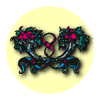









 Chalkidiki is the homeland of the great philosopher Aristoteles who defined and analyzed the "laographic research" and is considered the founder of Laography. His hometown is the most authentic part of Macedonia, a fact confirmed not only by history, but by the quality of life, as well. The locals maintain a high standard of living throughout years.
Chalkidiki constitutes 102 settlements, 30 of which were founded after 1922, when the refugees from Asia Minor brought with them all the elements from their homeland. Even the plainest houses are two-storeyed, stone-built, with wooden terraces, and their main feature is the "shachnisi", the projections of the first floor. At the seaside or in the mountainous areas, the houses look like fortresses, with carved doors decorated only with a handle. Another characteristic of their houses are the red tiles on the roofs.
Chalkidiki's musical tradition has been long. The inhabitants of the area, Thracepelasgi, came in touch and mingled with the emigrants from Chalkida, creating a glamorous musical culture. Aristoteles, in his problems, writes about acoustics, symphonies and musical esthetics. From the 7th to the 11th century AD, Hymnography was expanded with codifications from Byzantine music. Even the local traditional music, having many Byzantine influences, is still preserved and played on every occasion.
The instrument players today play the lute, "outi", "tambouras", clarinet, violin, flute, "dayers", "zilia", "semandra" and "rockana". A multitude of tunes are played at the feasts and the religious celebrations which end with the traditional dances of Chalkidiki, such as the "Kaggeleftos" in Ierissos, as well as many historic and circular dances for women. The dance groups are admired, not only for their grace, but for their beautiful colourful costumes, as well.
Chalkidiki is the homeland of the great philosopher Aristoteles who defined and analyzed the "laographic research" and is considered the founder of Laography. His hometown is the most authentic part of Macedonia, a fact confirmed not only by history, but by the quality of life, as well. The locals maintain a high standard of living throughout years.
Chalkidiki constitutes 102 settlements, 30 of which were founded after 1922, when the refugees from Asia Minor brought with them all the elements from their homeland. Even the plainest houses are two-storeyed, stone-built, with wooden terraces, and their main feature is the "shachnisi", the projections of the first floor. At the seaside or in the mountainous areas, the houses look like fortresses, with carved doors decorated only with a handle. Another characteristic of their houses are the red tiles on the roofs.
Chalkidiki's musical tradition has been long. The inhabitants of the area, Thracepelasgi, came in touch and mingled with the emigrants from Chalkida, creating a glamorous musical culture. Aristoteles, in his problems, writes about acoustics, symphonies and musical esthetics. From the 7th to the 11th century AD, Hymnography was expanded with codifications from Byzantine music. Even the local traditional music, having many Byzantine influences, is still preserved and played on every occasion.
The instrument players today play the lute, "outi", "tambouras", clarinet, violin, flute, "dayers", "zilia", "semandra" and "rockana". A multitude of tunes are played at the feasts and the religious celebrations which end with the traditional dances of Chalkidiki, such as the "Kaggeleftos" in Ierissos, as well as many historic and circular dances for women. The dance groups are admired, not only for their grace, but for their beautiful colourful costumes, as well.
http://www.areianet.gr/infoxenios/
